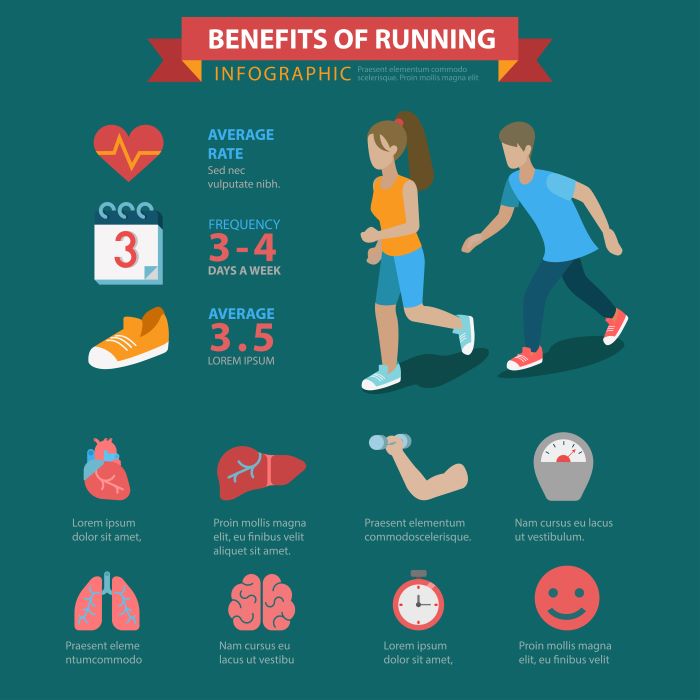Track workouts are a fundamental component for distance runners looking to enhance their performance. These workouts are specially designed to improve various aspects of running, including speed, endurance, and overall race strategy. By incorporating structured track workouts into your training regimen, you can achieve significant gains that may not be possible through casual running alone.
One of the main benefits of running track workouts is the ability to measure and monitor progress. On a track, distance runners can easily keep track of their lap times and paces, allowing for precise adjustments to training plans. This measurable aspect fosters a sense of accountability and motivation, pushing runners to strive for their personal best.
Additionally, track workouts promote various physiological adaptations essential for distance running. Consider these key elements:
- Improved Aerobic Capacity: Interval training on the track helps increase your VO2 max, enabling your body to utilize oxygen more efficiently.
- Enhanced Speed: Shorter, faster intervals allow distance runners to develop their speed, which is crucial for improving overall race times.
- Race Simulation: Track workouts can mimic race conditions, helping runners practice pacing and strategize their race execution.
Incorporating these workouts into your routine can lead to faster race times and a more enjoyable running experience. If you’re eager to explore tailored workouts that will transform your training, visit our website to learn more and get started today! Click here.
Essential Components of Effective Running Track Workouts
When it comes to crafting effective running track workouts for distance runners, understanding the essential components is key to maximizing performance and achieving training goals. A well-rounded track workout incorporates several critical elements that contribute to both physiological adaptations and mental resilience.
Here are the essential components to consider:
- Warm-Up: A proper warm-up is crucial for preparing the body for intense activity. This phase should include dynamic stretches and easy jogging to gradually increase heart rate and enhance blood flow to the muscles.
- Intervals: These are the heart of track workouts. Intervals typically consist of short bursts of high-intensity running followed by rest or low-intensity periods. The length of these intervals can vary based on specific training goals, such as speed or endurance development.
- Recovery: Equally important as the workout itself is the recovery phase. Adequate rest between intervals allows the body to recuperate, ensuring that each subsequent effort is performed at a high intensity.
- Cool Down: After completing the workout, a cool-down period is essential for gradually lowering heart rate and aiding in muscle recovery. This phase often involves light jogging and static stretching to prevent tightness and soreness.
- Strength Training: Incorporating strength training into track workouts can significantly benefit distance runners. Exercises targeting core stability and leg strength help improve running efficiency and reduce the risk of injury.
By focusing on these components, distance runners can create track workouts that not only challenge them but also promote continuous improvement in their performance.
Top Track Workout Techniques for Distance Runners

For distance runners, mastering various track workout techniques can significantly enhance overall performance and efficiency. These techniques not only build endurance but also improve speed and running economy. Here are some of the top track workout techniques specifically tailored for distance runners:
- Fartlek Training: This Swedish term, meaning “speed play,” involves varying pace throughout a run. Fartlek workouts can be structured on a track by alternating between fast laps and slower recovery laps, helping runners develop both speed and stamina.
- Tempo Runs: Tempo runs are designed to improve lactate threshold, allowing runners to sustain faster paces for longer periods. On the track, these can be performed as a steady pace run over a set distance, typically around 5K pace, followed by a cool-down.
- Long Intervals: Longer intervals, such as 800m to 1200m repeats, allow distance runners to work on speed endurance. These intervals should be run at a pace slightly faster than race pace, with adequate recovery in between to ensure quality efforts.
- Hill Repeats: Incorporating hill repeats into track workouts can build leg strength and improve running form. While the track itself may not have hills, distance runners can simulate this by running at an incline on a treadmill or finding a hilly area nearby for workouts.
- Race Simulation: Performing track workouts that mimic race conditions is invaluable. This includes practicing pacing strategies, hydration, and fueling during longer intervals or tempo runs to prepare for race day challenges.
By integrating these techniques into their training regimen, distance runners can not only enhance their physical capabilities but also build the mental toughness necessary for success on race day.
Incorporating Speed Work into Your Training Regimen

Incorporating speed work into your training regimen is essential for distance runners looking to improve their overall performance. Speed workouts enhance not only your pace but also your running economy, helping you to run faster with less effort. Here are some effective strategies for integrating speed work into your training:
- Start with a Proper Warm-Up: Always begin your speed session with a thorough warm-up. This may include dynamic stretches, light jogging, and form drills to prepare your muscles and joints for the high-intensity efforts to come.
- Gradual Progression: If you are new to speed work, start gradually. Begin with shorter intervals at a pace slightly faster than your current race pace, and gradually increase the intensity and duration as your body adapts.
- Interval Training: Focus on structured intervals, such as 400m or 800m repeats. Run these intervals at a pace that challenges you, followed by equal or slightly longer recovery periods to maintain quality in each repetition.
- Mix Up the Distances: Varying the distances of your speed workouts can keep your training fresh and effective. Incorporate short sprints, middle-distance intervals, and longer tempo runs to target different energy systems.
- Track Your Progress: Keep a detailed log of your speed workouts, noting your times, distances, and how you felt during each session. This helps identify trends in your performance and areas for improvement.
By consistently incorporating speed work into your training plan, you will develop faster race times and a greater sense of confidence. Remember to listen to your body and adjust your workouts as needed to prevent injury and ensure sustainable progress.
Measuring Progress and Adjusting Workouts Effectively

Measuring progress and adjusting workouts effectively is a crucial component of any distance runner’s training strategy. As you embark on your path to improved performance, keeping track of your progress allows you to make informed decisions about your training regimen. Here are some practical ways to measure your progress and adjust your workouts accordingly:
- Use a Running Log: Maintain a detailed running log that includes information on distance, pace, terrain, and how you felt during each run. This record will provide valuable insights into your training patterns and help identify areas for improvement.
- Set Specific Goals: Establish clear, measurable goals for your training. Whether it’s achieving a particular race time or increasing your weekly mileage, having defined objectives gives you direction and motivation.
- Conduct Regular Time Trials: Schedule periodic time trials to assess your speed and endurance. These benchmarks will help you gauge your improvement over time and determine if your training is yielding the desired results.
- Monitor Heart Rate: Utilizing heart rate monitors can provide insights into your cardiovascular fitness. Tracking your heart rate during workouts will help you understand your effort levels and recovery times, allowing for strategic adjustments.
- Solicit Feedback: Working with a coach or joining a running group can provide external accountability and perspective. They can offer feedback on your form and progress, helping you to fine-tune your training approach.
By consistently measuring your progress and making adjustments as needed, you will be better equipped to achieve your running goals. This proactive approach not only enhances your performance but also keeps you motivated and engaged in your training journey.
Creating a Balanced Training Schedule for Distance Running

Creating a balanced training schedule for distance running is essential for optimizing performance and reducing the risk of injury. A well-structured plan allows runners to incorporate various types of workouts while ensuring adequate recovery. Here’s how to create an effective training schedule:
- Incorporate Variety: Include different types of workouts such as long runs, interval training, tempo runs, and recovery runs. This variety not only helps prevent burnout but also enhances different aspects of your fitness.
- Establish Recovery Days: Schedule regular recovery days to allow your body to repair and strengthen. This could involve easy runs or cross-training activities like cycling or swimming, which help maintain fitness without the stress of running.
- Plan for Race Preparation: As race day approaches, gradually taper your mileage to ensure that you arrive at the start line rested and ready. This tapering phase is crucial for peak performance.
- Listen to Your Body: Always pay attention to how your body responds to training. If you feel fatigued or experience persistent soreness, adjust your schedule to include more recovery or lower intensity workouts.
- Seek Guidance: Consider consulting with a coach or utilizing online resources to create a training plan tailored to your goals and fitness level. This expertise can be invaluable in navigating your training effectively.
By following these guidelines, you can create a balanced training schedule that promotes sustainable progress and keeps you motivated on your running journey. Ready to take your distance running to the next level? Visit our website to learn more and get started today! Click here.


